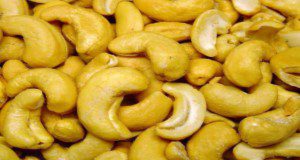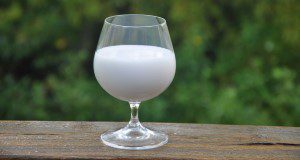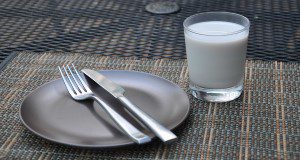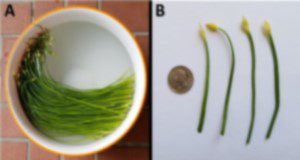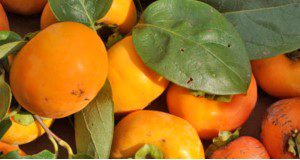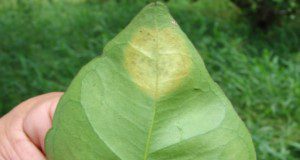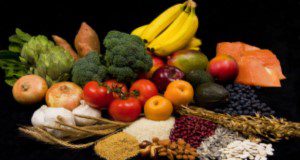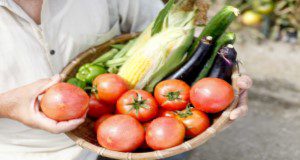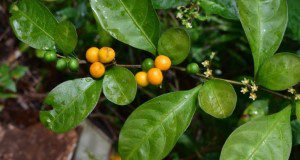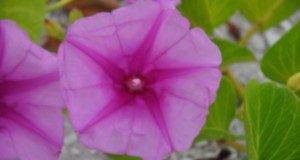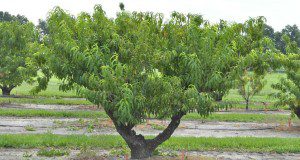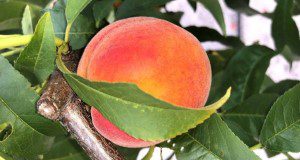Extension organizations are at the forefront of water resource issues, using educational programs to drive participant behaviors towards water conservation. The effectiveness of these efforts centers on designing programs with considerations of the factors that will change relevant decisions and behaviors among residential landscape water users. We conducted a statewide study to explore the concept of wellness and well-being, and these characteristics’ relationship to water conservation behaviors. Our results show that psychosocial measures influence current and future residential landscape water conservation behaviors differently. Perception of well-being is the more consistent predictor for both current behaviors and future intentions. These results demonstrate an opportunity for those focused on environmental behaviors to pair and embed programs focused on personal well-being to empower communities to work toward achieving conservation goals.
https://edis.ifas.ufl.edu/wc370
Author: Paul Roberts
Reducing Your Risk for Type 2 Diabetes: The Power of Food
Type 2 diabetes is a medical condition where you have too much sugar in your blood. According to the Centers for Disease Control, nearly 1 in 10 adults have Type 2 diabetes and 1 in 3 adults have pre-diabetes. This new 14-page publication of the UF/IFAS Food Science and Human Nutrition Department describes the modifiable risk factors for type 2 diabetes and tips to reduce your risk for diabetes. It also includes several example recipes. Written by Elena Torna, Jodi Fitzgerald, Danielle Nelson, Madison Woodard, and Jeanette Andrade.
https://edis.ifas.ufl.edu/fs397
Dietas populares: Dieta cetogénica
La dieta cetogénica es una dieta alta en grasas y muy baja en carbohidratos. El primer uso documentado de la dieta cetogénica fue en 1921 para tratar la epilepsia en niños. En los últimos años, la dieta cetogénica ha ganado un resurgimiento como un medio potencial para perder peso. La dieta cetogénica se ha vuelto popular debido al respaldo de las celebridades y las influencias de las redes sociales, pero ¿es segura y efectiva?
This new 4-page article is the Spanish translation of FSHN20-44/FS403, Popular Diets: Ketogenic Diet. Written by Kelsey Gemmill, Daniela Rivero-Mendoza, and Wendy Dahl, and published by the UF/IFAS Food Science and Human Nutrition Department.
https://edis.ifas.ufl.edu/fs416
Plant-Based Milks: Cashew
The availability and consumption of plant-based milk alternatives have been on the rise. Sales of nondairy milk alternatives have more than doubled, whereas consumption of traditional cow’s milk has dropped. This increase may be due to plant-based milks being perceived as “natural,” as well as a rise in veganism and avoidance of lactose. The primary plant-based dairy alternatives are almond, soy, coconut, cashew and rice. This new 4-page publication of the UF/IFAS Food Science and Human Nutrition Department discusses the nutritional content, potential health benefits, and potential risks of cashew milk. Written by Jamie Zeldman, Daniela Rivero-Medoza, and Wendy J. Dahl.
https://edis.ifas.ufl.edu/fs413
Plant-Based Milks: Coconut
Plant-based alternatives to cow’s milk have become a rising trend. Factors that may steer consumers toward nondairy milk alternatives include adherence to a vegan diet, lactose intolerance, allergy to cow’s milk, or simply preference. Coconut milk is one of the many varieties of plant-based milk. Whether you are considered switching to or have already begun purchasing a plant-based milk, the purpose of this new 4-page guide is to inform you on the nutrient content of coconut milk and its potential health benefits and risks. Written by Celia Andreo, Daniela Rivero-Mendoza, and Wendy J. Dahl, and published by the UF/IFAS Food Science and Human Nutrition Department.
https://edis.ifas.ufl.edu/fs411
Plant-Based Milks: Almond
Almond milk, a plant-based milk alternative, is produced from almonds and water. Almond milk originated from the Mediterranean region and has been consumed for many years. In the United States, there are several marketed brands of almond milk. This new 3-page publication of the UF/IFAS Food Science and Human Nutrition Department describes the nutrient profile and potential health benefits and risks of almond milk. Written by Elena Torna, Daniela Rivero Mendoza, and Wendy J. Dahl.
https://edis.ifas.ufl.edu/fs410
Leek Cultivation Guide for Florida
Leek (Allium porrum L.) is a member of Amaryllidaceae, a family with ornamental crops, like amaryllis, and with vegetable crops, like onion. Leek is a highly demanded vegetable because of its flavor and nutrient content. Although there is great potential for leek to be grown commercially in Florida due to demand and appropriate climatic conditions, the United States does not currently produce a significant quantity of leek compared to countries such as Indonesia, Turkey, and China. This new 7-page publication of the UF/IFAS Horticultural Sciences Department, written by Mary Dixon and Guodong Liu, provides a basic guide to cultivation of leek in Florida, as well as information on its agricultural, culinary, and medicinal uses.
https://edis.ifas.ufl.edu/hs1388
Plant-Based Milks: Rice
Rice milk is a plant-based, nondairy beverage made primarily from milled rice and water. It is marketed as an allergy-friendly, easy-to-digest, vegan substitute for cow’s milk. Similar to other plant-based beverages, rice milk usually has an opaque white or beige color and creamy texture resembling that of cow’s milk. This new 4-page publication of the UF/IFAS Food Science and Human Nutrition Department describes how rice milk is made, its ingredients and nutrient profile, and potential health benefits and risks of consumption. Written by Meagan Lamothe, Daniela Rivero-Mendoza, and Wendy J. Dahl.
https://edis.ifas.ufl.edu/fs412
Cultivares de Caqui Japonés en Florida
El caqui japonés, Diospyros kaki L., es originario de China y fue cultivado por primera vez en Florida en el año 1870. El número de fincas productoras de caqui en Florida ha aumentado de 164 a 227 durante el período 2012-2017, haciendo mayor hincapié en la naturaleza de pequeña escala de la superficie promedio de fincas en esta industria. Los árboles crecen y fructifican mejor en el centro y norte de Florida, y pueden producir altos rendimientos de fruta de buena calidad. En el sur de Florida, la calidad de los frutos de tipo astringentes es mejor que la de los de tipo no astringentes.
This new 12-page article is the Spanish translation of SP101/MG242, Japanese Persimmon Cultivars in Florida. Written by Ali Sarkhosh, Peter C. Andersen, and Dustin Huff; translated by Jonathan Clavijo Herrera; and published by the UF/IFAS Horticultural Sciences Department.
https://edis.ifas.ufl.edu/mg460
Citrus Diseases Exotic to Florida: Citrus Leprosis
This article is one in a series designed to provide important information on the causal agent, symptoms, and transmission of exotic citrus diseases. Disseminating the information about the diseases to the citrus industry may prevent their introduction and spread in Florida. This 5-page document will focus on the exotic viral disease citrus leprosis. This is a major revision of an article originally published in 2006. Written by O. Batuman, A. Levy, P. Sieburth, A. M. Paolillo, K.-R. Chung, and R. H. Brlansky, and published by the UF/IFAS Plant Pathology Department.
https://edis.ifas.ufl.edu/pp148
Reducing Your Risk for Arthritis: The Power of Food
Arthritis is the swelling or tenderness of the joints, and one in four adults within the United States have been diagnosed with some type of it. Arthritis can happen because of genetics and aging, but other factors, such as diet and lifestyle, may contribute to it. This new 5-page publication of the UF/IFAS Food Science and Human Nutrition Department describes the modifiable factors contributing to arthritis and tips to reduce risk for arthritis. It also includes some relevant recipe ideas. Written by Sarah Curl, Jodi Fitzgerald, Danielle Nelson, and Jeanette Andrade.
https://edis.ifas.ufl.edu/fs398
Urban Tree Selection for Diversity
Urban tree diversity is important when attempting to create a healthy, beneficial, and resilient urban forest. Having a variety of trees can increase the aesthetic value for residents and create habitats for plants and animals. Some common street trees currently in the landscape are not site-appropriate and create infrastructure damage. By planting different types of trees in these locations, maintenance costs and infrastructure damage can be reduced and tree longevity increased. This new 4-page fact sheet is intended to provide urban foresters, arborists, landscape designers, and others in charge of tree planting with a process for introducing new species into the urban environment. Written by Deborah R. Hilbert, Andrew K. Koeser, and Robert J. Northrop, and published by the UF/IFAS Environmental Horticulture Department.
https://edis.ifas.ufl.edu/ep589
Nutrition for Health and Fitness: Sugar and Other Sweeteners
This new 8-page publication of the UF/IFAS Food Science and Human Nutrition Department provides information about sugars and other sweeteners in the American diet. It describes hidden sources of added sugars in foods to help those who want to reduce sugar intake find the added sugars in their diets. The section on high-intensity sweeteners looks at the characteristics of each approved sweetener, including aspartame, sucralose, and stevia. Written by Linda Bobroff.
https://edis.ifas.ufl.edu/fs406
Exemplary Youth Leadership Series: Enable Others to Act
This publication series is designed to outline strategies and experiences to expose youth to and engage them with leadership concepts. In this new 2-page publication of the UF/IFAS Department of Agricultural Education and Communication, students will try on aspects of the fourth practice of exemplary leaders: enable others to act. Two quick, low-cost activities are included for implementation with youth. These activities are best suited for students ages 10–18. However, modifications are included for each of the activities to allow for different group sizes, ages, and abilities of the youth participating. Written by Megan Stein.
https://edis.ifas.ufl.edu/wc369
Guía para Cultivar Vegetales en la Florida
El desarrollo y planificación de un huerto en el hogar, es una actividad agrícola que puede realizarse durante todo el año en Florida. Puede ofrecer muchos beneficios para la salud física y emocional. Los huertos nos proveen alternativas para realizar ejercicios, disfrute del huerto, producción de vegetales frescos y nutritivos, ahorro económico y muchos otros. Esta guía proporciona recomendaciones para hacer un huerto en su residencia y comunidad, e incluye las fechas de siembra, la selección de variedades para la planificación de cultivos, el manejo de agua, nutrientes, plagas y la cosecha.
This is a translation of SP103/VH021, Florida Vegetable Gardening Guide. Written by Sydney Park Brown, Danielle Treadwell, J. M. Stephens, and Susan Webb; translated by Francisco Rivera; and published by the UF/IFAS Horticultural Sciences Department.
https://edis.ifas.ufl.edu/hs1383
A Guide to Carbonating Beverages at Small Scale
The objective of this new 5-page guide is to provide information on how to successfully carbonate beverages on a small scale. Included is information on the benefits of carbonation, common carbonation levels, pros and cons of different carbonation methods, standard procedures to achieve a specific carbonation level, and economic considerations for manufacturers. Written by Xuwei Song, Nicholas Wendrick, Charles A. Sims, and Andrew MacIntosh, and published by the UF/IFAS Food Science and Human Nutrition Department.
https://edis.ifas.ufl.edu/fs379
Distribution, Identification and Management of Two-Leaf Nightshade (Solanum diphyllum), an Invasive Plant in Florida
Two-leaf nightshade, Solanum diphyllum, is a member of the Solanaceae or potato family. It is native to Mexico southwards to Costa Rica. It has escaped cultivation in Florida and grows as far north as Duval County and from Volusia County south to Miami-Dade County. A “bird-dispersed” volunteer, it occurs in urban and conservation areas and on disturbed land. The plants produce abundant berries with many many small seeds. This new 5-page publication of the UF/IFAS Environmental Horticulture Department is primarily intended for Florida gardeners, landscapers, and land managers, and it contains information on identification, flowering, fruiting, and management recommendations for this widely occurring plant. Written by Stephen H. Brown, Chris Marble, and Stephen F. Enloe.
https://edis.ifas.ufl.edu/ep588
Railroad Vine (Ipomoea pes-caprae): Identification and Uses
Railroad vine is one of the most widely distributed beach plants in the world. The moving sand and salt spray make the beach environment a harsh one, and the plants that live there are specialized to colonize this environment. This new 7-page document, published by the UF/IFAS Environmental Horticulture Department, describes railroad vine’s leaves, flowers, fruit, planting and maintenance, and insect and disease problems. Written by Stephen H. Brown and Marc S. Frank.
https://edis.ifas.ufl.edu/ep587
Summer Pruning in Low-Chill Peaches Grown in Florida
Low-chill peach trees growing under Florida conditions can become vigorous and large. Summer pruning is a management strategy that can be applied to help restructure the canopy, direct the tree’s resources into fruit production, and improve the efficiency of fieldwork. Without summer pruning, peach orchards in subtropical regions will continue to grow vigorously and, if left unmanaged, will reach a point at which ladders will be required to harvest and maintain the trees. Summer pruning can be a means of reducing overall tree size, redistributing fruiting wood for easier harvesting, reducing disease pressure, and increasing fruit quality. This new 5-page publication of the UF/IFAS Horticultural Sciences Department, written by Ali Sarkhosh, Dustin Huff, Trequan McGee, and Juanita Popenoe, provides an illustrated step-by-step guide to summer pruning of peach trees.
https://edis.ifas.ufl.edu/hs1377
Oportunidades alternativas para fincas pequeñas: Producción de durazno y nectarinas versión revisada
El suave clima invernal de Florida y el comienzo de la temprano de primavera ofrecen oportunidades únicas para la producción de duraznos y nectarinas de temporada temprana. Durante los últimos 12 años, la Universidad de Florida ha lanzado muchos cultivares nuevos de durazno y nectarina. Estos nuevos y mejorados cultivares han aumentado el potencial de expansión del aspecto comercial de melocotones y nectarinas en gran parte de la península de Florida y en las regiones de la Costa del Golfo del sureste de los Estados Unidos.
This new 5-page article is the Spanish translation of RFAC018, Alternative Opportunities for Small Farms: Peach and Nectarine Production Review. Written by Ali Sarkhosh, Mercy Olmstead, Jeff Williamson, Jose Chaparro, and Juanita Popenoe, translated by Eva Pabon, and published by the UF/IFAS Horticultural Sciences Department.
https://edis.ifas.ufl.edu/hs1374



